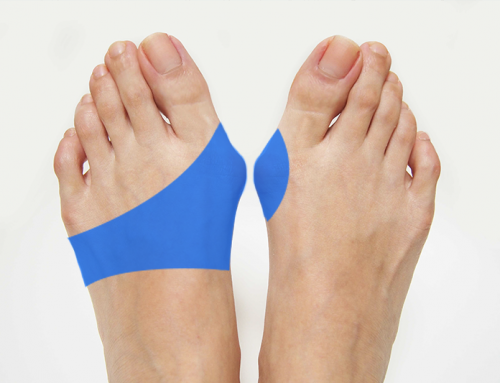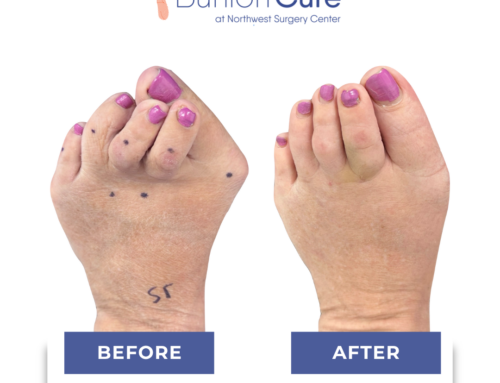Have you ever wondered, “what is the difference between a bunion and hallux valgus?” A bunion is a large, bony lump that appears along the joint of the big toe, often as a result of an imbalance within the foot. Bunions, sometimes called Hallux Valgus, have numerous causes, including:
- Wearing Improper Footwear
- Pre-existing Joint Conditions
- Genetics
Bunions are not necessarily genetic, however, they can form as a result of one’s natural foot shape, leaving some predisposed to bunions compared to others. Many people wonder, “What is the difference between a bunion and hallux valgus?” The answer is simple: there is no difference. “Bunion” is simply another term for Hallux Valgus.
No matter what you choose to call them, bunions are a fairly serious condition that can be extremely painful when left untreated.
Common symptoms of bunions include:
- A painful bump on the side of the big toe that becomes irritated with contact
- Difficulty wearing normal shoes
- Curvature in the big toe
- Pain on the bottom of the foot
- Difficulty walking
- Pain at night and difficulty sleeping
If you are experiencing any of these symptoms, it is important to contact your doctor right away to speak about a bunion diagnosis that can allow you to seek further treatment.
Bunion Treatment
Treating bunions at home can be difficult (if not impossible). While at home treatments such as shoe modifications and pain medications can be used, these solutions only offer temporary relief from bunion pain as they do not remove the bunions or even treat them at the source. Bunions must be removed through surgery in order for patients to experience permanent relief from their pain.
Bunion Surgery
Bunion surgery can be quite painful, and often requires a great deal of post-operative care. Those who undergo bunion surgery should expect a recovery period lasting between 3 and 6 weeks, which includes stitches that must be cared for and the need for crutches in order to walk short distances. Recovery from traditional bunion surgery can also leave patients in a great deal of pain, making this one of the most difficult surgeries to recover from.
Minimally Invasive Foot Surgery
For patients suffering from bunions or Hallux Valgus, the good news is that clinics like Northwest Surgery Center now offer minimally invasive surgery for the treatment of bunions as an alternative to traditional surgery.
These safe and effective outpatient procedures use local anesthesia to remove bunions in just around 90 minutes, which includes pre-operative preparation and post-operative care. Patients are able to walk out of surgery, drive themselves home, and even return to work the next day. Individuals who undergo minimally invasive surgery for the treatment of bunions should expect a relatively painless recovery period and can look forward to walking and resuming normal activities shortly after surgery.
Contact Northwest Surgery Center
Whether you refer to the painful bump on your foot as a bunion or a Hallux Valgus, treat the pain with a minimally invasive procedure so you can get rid of it once and for all. Contact us today to schedule a consultation with Northwest Surgery Center or speak to one of our expert team members about whether or not bunion surgery is right for you.

About the Author
Dr. Jordan Sullivan, DPM, is a board-certified podiatrist at Northwest Surgery Center specializing in minimally invasive foot and ankle procedures. He’s passionate about helping patients get back on their feet faster with less downtime.
Learn more about Dr. Sullivan here.





